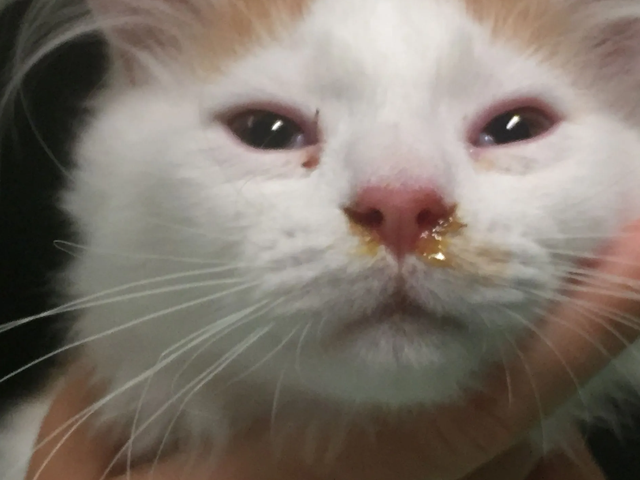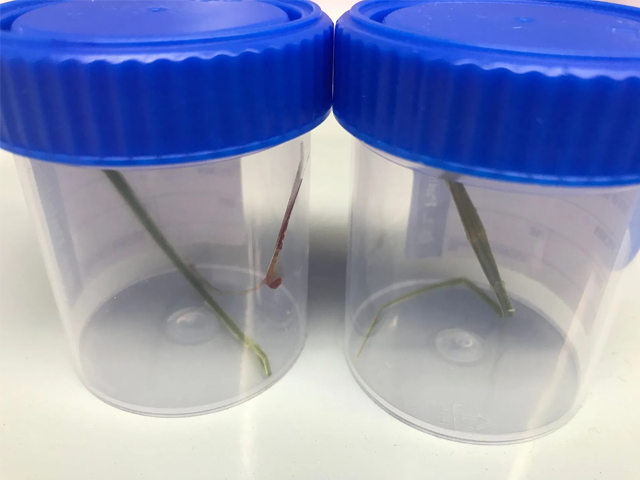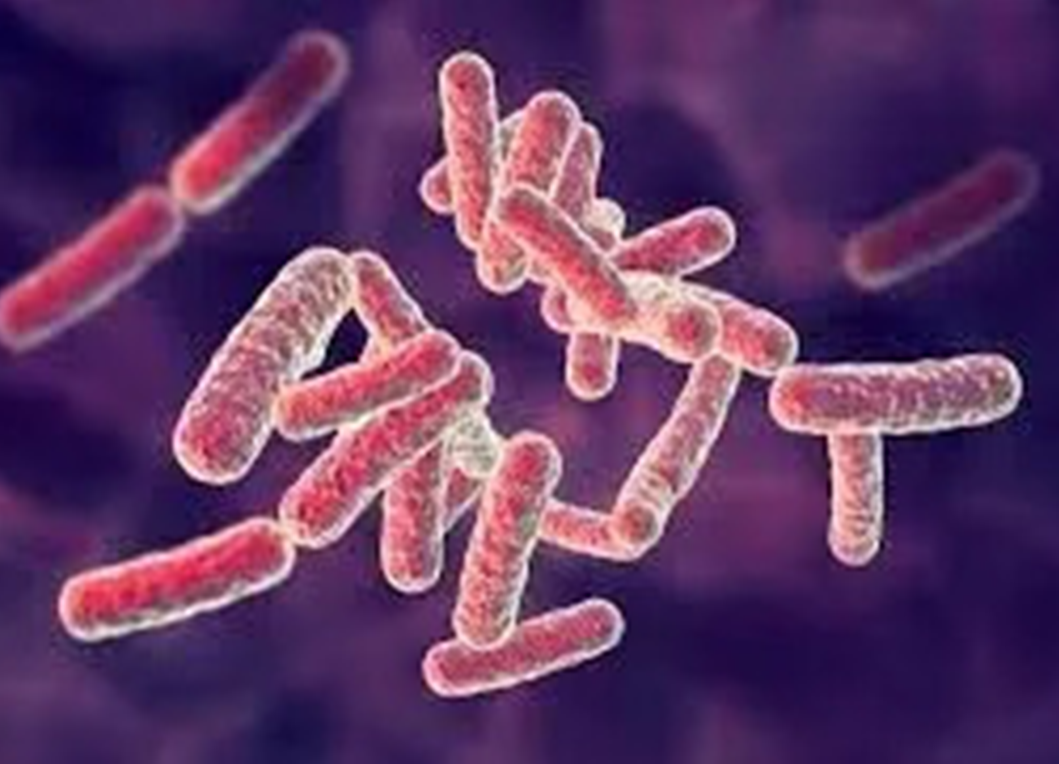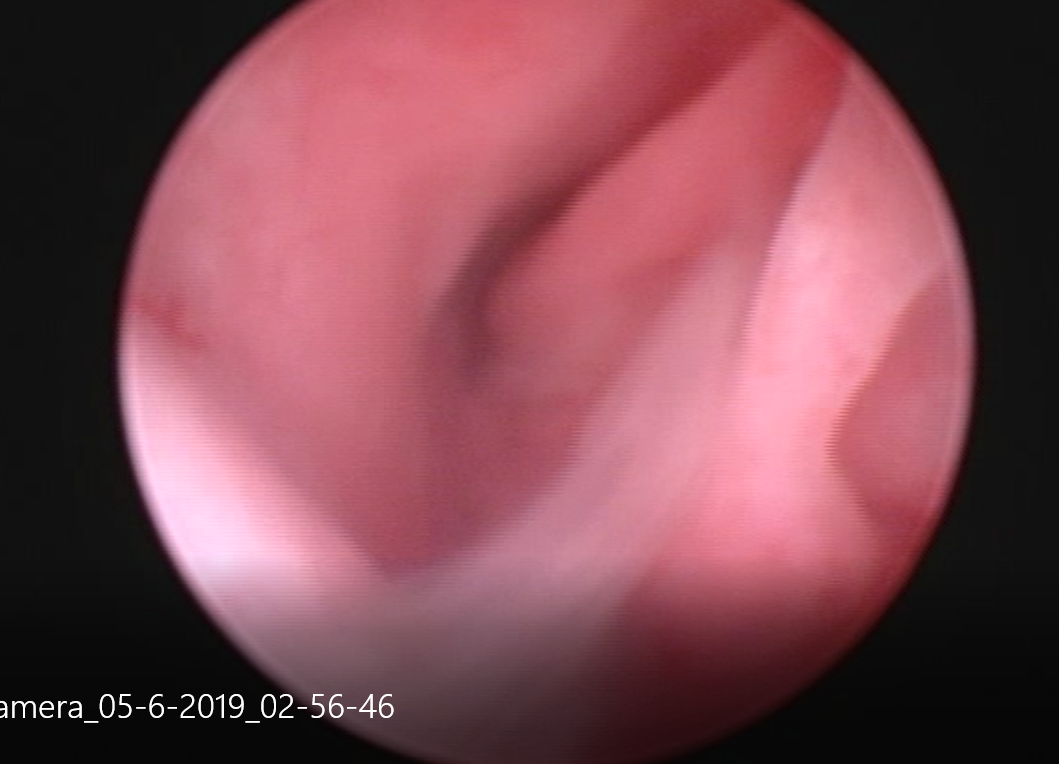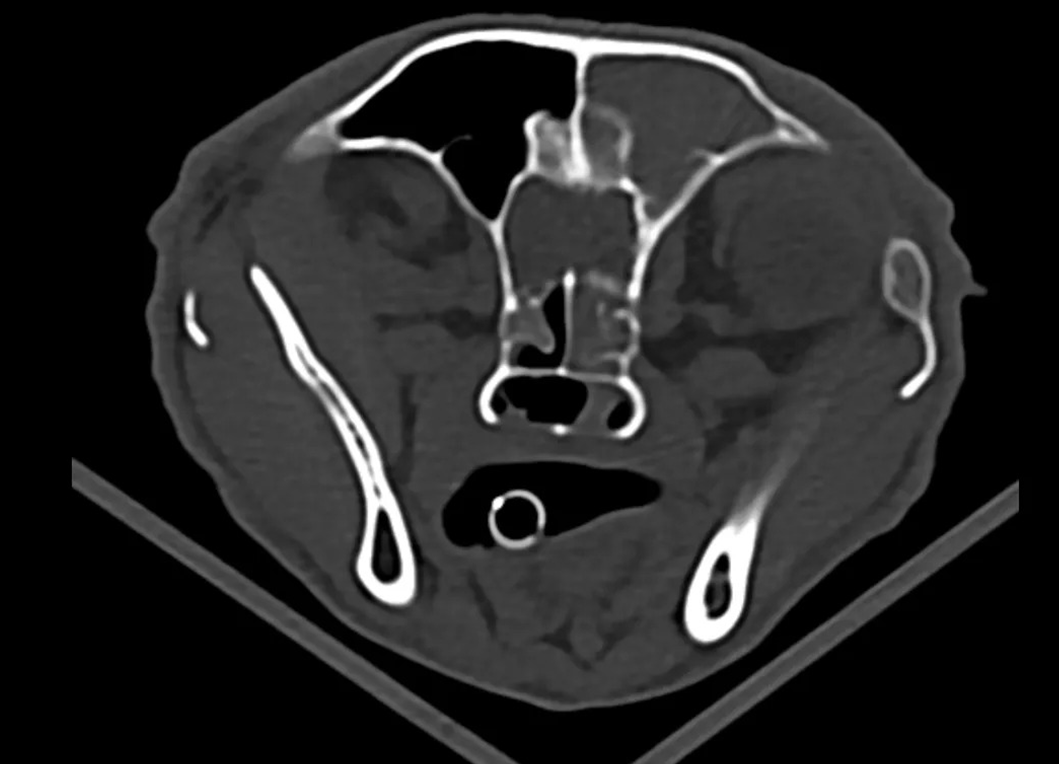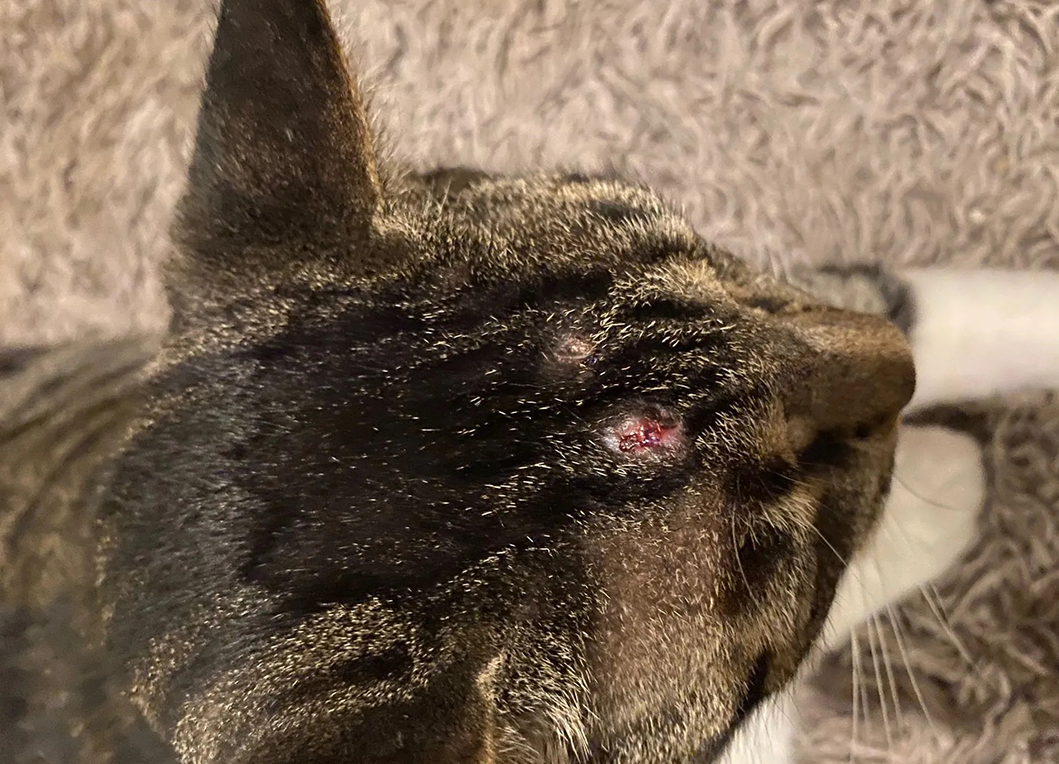What is rhinoscopy?
Nasal endoscopy or rhinoscopy is a procedure used to look at the inside of your cat's nasal cavity and sometimes the sinuses. Our feline veterinarians insert an endoscope (a long tube with a camera and a light) into the back of your cat's nose through their mouth and also up into their nose. The camera captures video images and projects them onto a screen.
Why have I had rhinoscopy recommended for my cat?
Rhinoscopy is recommended to investigate a cat who has had chronic sneezing and nasal discharge. It is used to identify rhinosinusitis (nasal and sinus inflammation or infection), nasal polyps, nasal cancer and fungal infections. It is also used to remove foreign objects such as grass, seeds or even insects!
Does my cat need a CT with their rhinoscopy?
CT imaging and rhinoscopy complement each other very well and give us the full clinical picture of what is happening in your cat's nose and sinus cavities. A CT scan gives us detailed anatomic information about the structure of these areas and we cannot reach all of these areas (such as the sinus) in cats due to their size. Sometimes areas of disease are only seen on CT. Rhinoscopy allows your veterinarian to evaluate the nose from the inside and obtain samples for testing. It also allows removal of foreign bodies if they have been identified. We will discuss with you at your cat's appointment whether we think a CT will be beneficial.
What happens when my cat has a rhinoscopy?
- Rhinoscopy is always performed under anaesthesia. This is to keep your cat still and also to protect their lungs from the fluid that is used to flush their nose during the procedure.
- Once your cat is under anaesthetic, they are positioned to keep their head still while we examine the inside of their mouth and the back of their throat using soft flexible endoscopy cameras.
- Images are obtained and any abnormal areas are identified. This is also where many foreign bodies tend to get stuck.
- We then change to a rigid camera which is inserted up into their nostrils. We examine the inside of your cat's nose and take biopsies of the nasal tissue for histopathology (looking at the types of cells) and culture (growing bacteria or fungus).
- While the rigid camera is inside your cat's nose, there is saline flush running which helps to clear discharge. Cats with very snotty noses often feel better after the procedure as it clears everything out.
Is rhinoscopy painful?
Rhinoscopy shouldn't hurt although sometimes there can be some bleeding from the biopsy sites and cats may sneeze a little more. These symptoms usually resolve on their own in one or two days.
How long does rhinoscopy take?
In most cases, rhinoscopy takes about 30-45 minutes to complete.
What are the risks of rhinoscopy?
In general, rhinoscopy is very safe. Adverse reactions can occur relating to the anaesthetic (if they have other airway related problems) or if disease has spread from the nose to the brain (e.g. cryptococcus fungal infections). CT can be important in helping to identify these changes. We will discuss with you if we think your cat has any additional risk factors.
When do we get the results?
Your feline veterinarian will discuss the results with you on the day. Biopsy results are typically received within 72 hours.
How long does my cat need to stay for?
In cats that are otherwise well, rhinoscopy is generally a day procedure and you cat can go home the same day.


